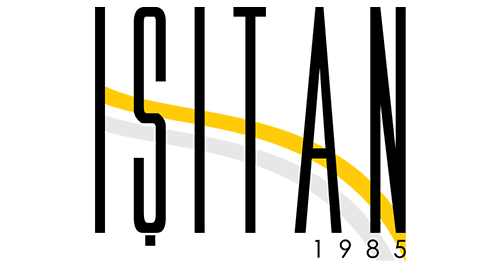Would a Bank Cash Advance Stay Any Safer?
Friday
A ‘safer’ cash advance seems like an oxymoron. Experts have actually branded these notoriously high-cost loans as financial obligation traps that cause borrowers to get ever much deeper into the opening. Compliment of
A ‘safer’ cash advance appears like an oxymoron. Critics have branded these loans that are notoriously high-cost financial obligation traps that can cause borrowers to get ever much deeper when you look at the opening.
As a result of a recently available change that is regulatory it now are feasible for banking institutions to supply little, short-term loans that would be much less hazardous for borrowers. Whether banking institutions will do so remains actually to be seen.
The right moves could conserve low- and moderate-income People in the us huge amounts of bucks per year. The moves that are wrong produce https://tennesseetitleloans.org/ still another sinkhole if you are currently struggling.
Risky for borrowers ” and loan providers
Payday advances are marketed as an easy way for individuals to generally meet a short-term money crunch in a rush. Individuals borrow fairly amounts that are small typically $300 to $400, and spend a charge of $45 to $60 for a financial loan that is expected to endure several days until their next paycheck. Such loans have actually a successful interest that is annual north of 300%.
The thing is that despite the cost that is high borrowers, loan providers can not make much revenue, if any, on little loans whether they have to complete high priced underwriting such as for instance credit reviews and earnings verification. But loans made without reference to a person’s power to repay could be dangerous, since individuals ramp up expanding the loans and spending a lot of money in costs. The typical cash advance consumer paid $520 in costs yearly to over and over repeatedly borrow $375, based on the Pew Charitable Trusts.
Nick Bourke, Pew’s manager of consumer finance, has examined the loan that is small-dollar extensively and recommends two repairs that may make these loans lucrative without getting predatory:
Enable borrowers to cover down their balances over almost a year as installment loans, as opposed to needing the stability be paid back at one time, andLimit the payment per month to 5% of this debtor’s earnings.
Bourke estimates a good shift that is partial loans with one of these modifications could save yourself low- and moderate-income customers $10 billion every year.
To date, though, nobody in Washington appears to be paying attention.
A solution, maybe maybe not a remedy
On Oct. 5, the customer Financial Protection Bureau announced a rule that could need loan providers to ascertain borrowers’ power to repay small-dollar loans ” an underwriting requirement that may drive many payday loan providers away from business.
The CFPB announced its rule, the regulator for the nation’s biggest banks, the Office of Comptroller of the Currency, cleared the way for banks to once again offer a similar small-dollar loan product on the same day. As opposed to offer banking institutions brand brand brand new guidelines which could result in the loans safer, the OCC just rescinded its guidance that is previous that it difficult for banking institutions to provide them at all.
Banking institutions tried short-term loans a couple of years back, providing whatever they were careful to phone ‘deposit advance services and products’ to customers who needed fast cash. Regardless of the various title, deposit improvements worked nearly the same as payday advances. Individuals could borrow a hundred or so bucks for the cost and repay the mortgage making use of their next paycheck.
The CFPB in 2013 warned that the nature that is very of loans and deposit improvements frequently developed financial obligation traps.
Borrowers usually couldn’t manage to repay the balance that is full so lent over and over again.
The CFPB research found nearly 50 % of payday borrowers had significantly more than 10 transactions each year, while deposit advance users typically had a balance that is outstanding nine months from the 12 months.
‘When they be in, they can not escape,’ says Rebecca Borne, senior policy counsel when it comes to Center for Responsible Lending, a customer advocate.
Regulators started warning banking institutions against deposit improvements. The six major banking institutions that offered them ” Wells Fargo, U.S. Bank, Fifth Third Bank, areas Financial, Bank of Oklahoma and Guaranty Bank ” phased out of the loans in 2014.
Despite the fact that banking institutions is now able to resume loans that are small-dollar it isn’t clear that they’ll. The CFPB guideline is certainly one barrier that is potential although its future is not clear given that the agency’s manager has resigned.
Additionally, experts did such an excellent job of equating deposit improvements with payday advances that banking institutions are hesitant to return back to the marketplace, claims David Pommerehn, connect counsel that is general vice president associated with the customer Bankers Association, which represents big banking institutions.
‘It’s maybe not well worth the reputation danger for them,’ Pommerehn claims.
Preferably, individuals would cut costs for emergencies, rather than move to high-cost loans that are short-term. But since therefore many are unsuccessful ” 44% of US grownups state they can not raise $400 in a rush ” regulators and lawmakers should guarantee they usually have a secure and alternative that is affordable.
This short article had been published by NerdWallet and ended up being initially published because of The Associated Press.
More From NerdWallet
3 measures to have Out of financial obligation just how to develop Credit exactly just What loan companies Can and Can’t Do
This article Would a Bank Cash Advance Get Any Safer? initially showed up on NerdWallet.
